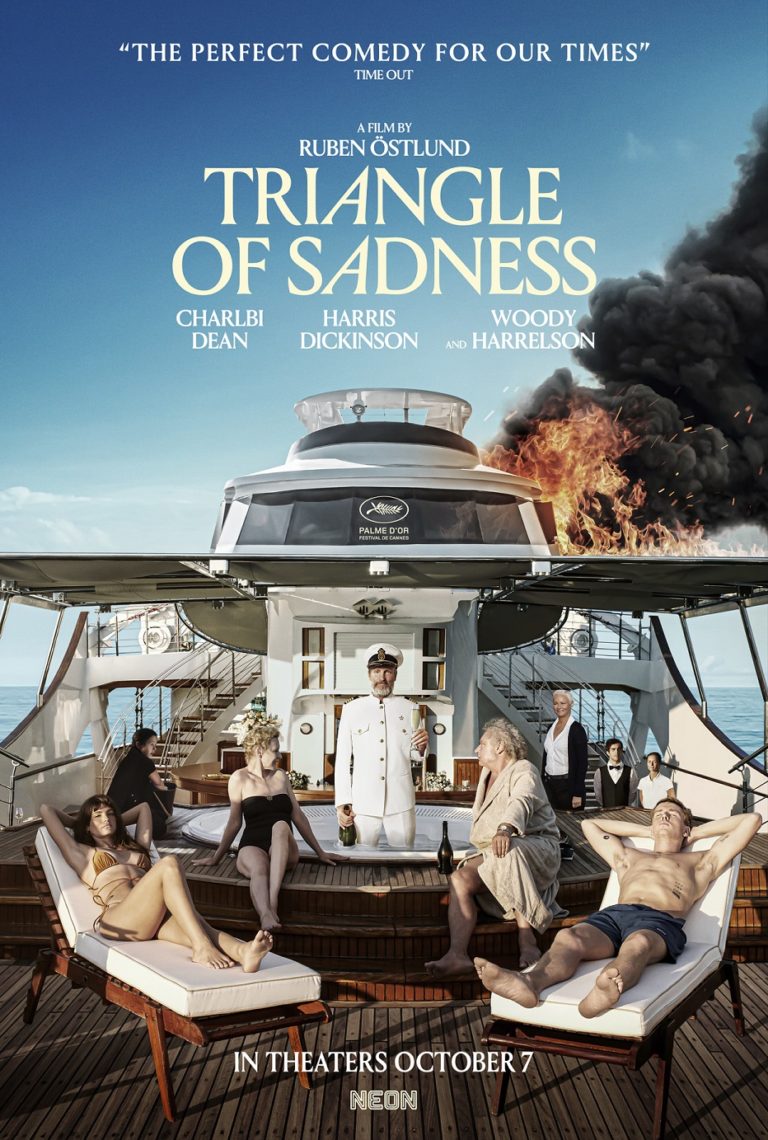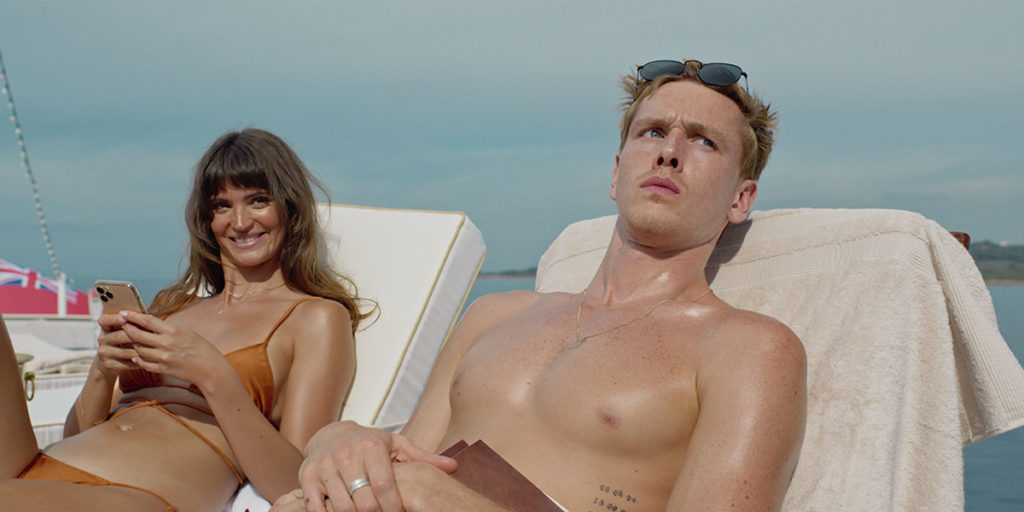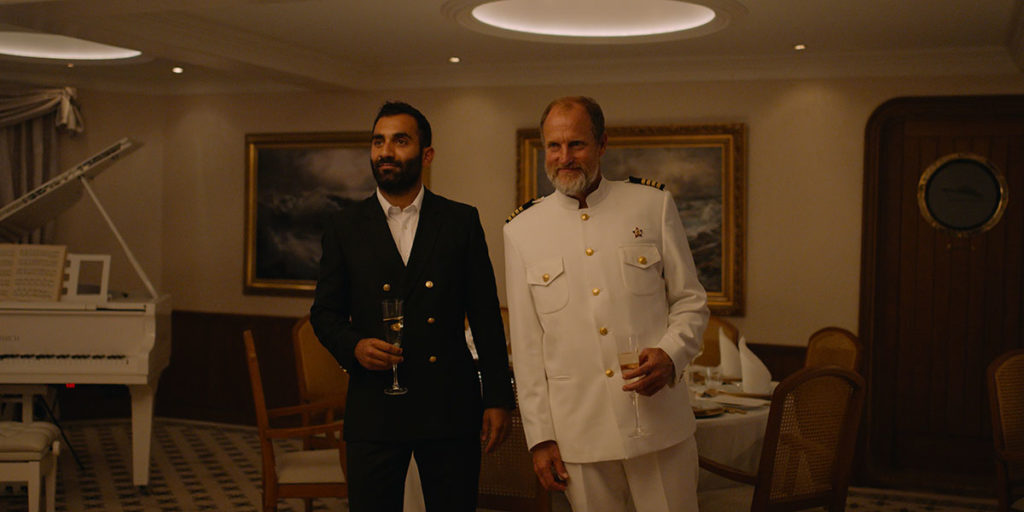
Filmmaker Ruben Östlund has no problem making audiences uncomfortable. His film Force Majeure looks at the aftermath of an apparent avalanche when one husband and father’s gut reaction is to grab his phone and keys and run rather than protect his family. The Square, in addition to tackling the often pretentious nature of art, examines the impact of accusations, whether true or false, and how those with means often do not have to suffer the consequences of them being leveled in the first place. Those two projects provide a useful framework for approaching Triangle of Sadness, Östlund’s newest film that dials up the dissection of privilege and excess.

Broken into chapters, Triangle of Sadness first introduces Carl (Harris Dickinson) and Yaya (Charlbi Dean). Both are models who frequently argue about the idea of who should pick up the check at dinner and whether the one who makes more money should actually have to pay or merely offer in theory.
When they are aboard a luxury cruise they didn’t need to pay for, they get to see how other people behave, including a very wealthy Russian businessman, Dimitry (Zlatko Burić), and the captain of the ship (Woody Harrelson), who takes his job anything but seriously and exhibits none of the passenger-pleasing traits typically necessary for facilitating a successful and pleasing experience for the super-rich.
The most appropriate way to describe this film is ruthless, holding nothing back in its skewering of those who have means and never have to think about the work that might go into something. Carl, who is put through his own degree of humiliations in his work as a model, quickly goes to complain about a shirtless cruise employee on the deck whom he encounters while he himself is shirtless and sunbathing.
Justice of a sort does come when the cruise devolves into disaster following a captain’s dinner from hell of exotic shellfish in extremely violent waters. Östlund spares nothing in his depiction of how far the mighty fall, and the film’s third chapter is even darker and more peculiar. The theme continues to return to survival of the fittest, not the richest, even though they have a distinct advantage and are often much likelier to succeed due simply to what they can effortlessly access.

Triangle of Sadness, which gets its misleading title from a snarky comment made by someone assessing Carl’s face as he tries out his runway walk for him, is reminiscent of The White Lotus in the way it exaggerates characteristics many viewers may have to show a portrait of advantage that no one would find endearing. Audiences shouldn’t want to recognize themselves in any of these characters since they wouldn’t feel that they deserve the fates they do, even just with the vicious vomiting and excreting that comes after an unholy mix of fine dining and turbulence. But what Östlund does typically effectively is to force a confrontation with whether these people have brought about what comes to them or if they could be considered victims despite their entitled attitudes.
Östlund displays an evolution as a filmmaker in that the first chapter of Triangle of Sadness feels like Force Majeure, the second navigates similar territory to The Square, and act three goes further than he’s gone before, refusing to provide a neat or comfort ending. His cast is up for the challenge, particularly Dickinson and Dean, who sadly died at the age of thirty-two earlier this year and would surely have had a very promising career ahead of her after this breakout role. Though it manages to be vividly engaging – and equally horrifying – throughout its lengthy 143-minute runtime, it’s difficult, purposely so, to feel truly at ease watching this film, which succeeds in its primary purpose of questioning how we behave as a society.
Grade: B
Check out more of Abe Friedtanzer’s articles.
https://www.youtube.com/watch?v=VDvfFIZQIuQ
Following its North American premiere at the Toronto International Film Festival, Triangle of Sadness will be released in theaters on October 7th.

